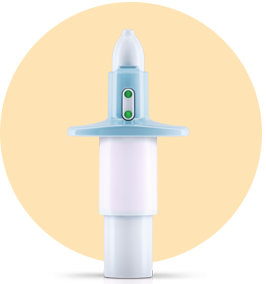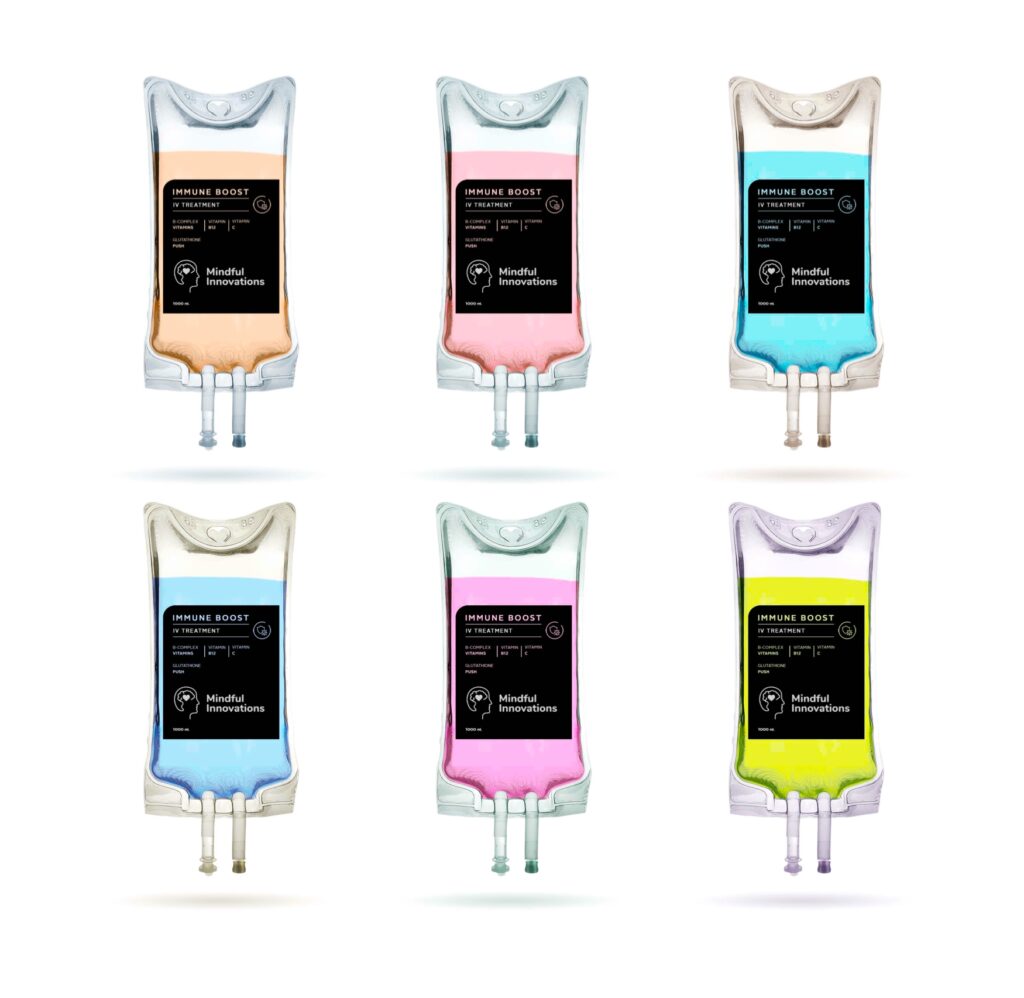Services
Mental Health
Therapy
Spravato Treatments

 SPRAVATO® (Esketamine) offers a different approach and is the only nasal spray treatment indicated for treatment-resistant depression (TRD). Spravato is used with an oral antidepressant for treating adult TRD and depressive symptoms in adults with major depressive disorder (MDD) with acute suicidal ideation or behavior. Spravato is an FDA-approved effective way to relieve severe depressive symptoms. There are many success stories of people overcoming depression and improving their quality of life using Spravato.
SPRAVATO® (Esketamine) offers a different approach and is the only nasal spray treatment indicated for treatment-resistant depression (TRD). Spravato is used with an oral antidepressant for treating adult TRD and depressive symptoms in adults with major depressive disorder (MDD) with acute suicidal ideation or behavior. Spravato is an FDA-approved effective way to relieve severe depressive symptoms. There are many success stories of people overcoming depression and improving their quality of life using Spravato.
IV Hydration
 IV Hydration therapy is a remarkable way to replenish the body of vitamins and minerals by rapidly allowing them to enter the bloodstream, bypassing the digestive tract and liver, then circulating throughout the body. Unlike oral medications and supplements that are only around 50% bioavailable, IV therapy provides 90% bioavailability, which is significantly beneficial. IV hydration directly infuses nutrients into your body without delays in relieving your symptoms.
IV Hydration therapy is a remarkable way to replenish the body of vitamins and minerals by rapidly allowing them to enter the bloodstream, bypassing the digestive tract and liver, then circulating throughout the body. Unlike oral medications and supplements that are only around 50% bioavailable, IV therapy provides 90% bioavailability, which is significantly beneficial. IV hydration directly infuses nutrients into your body without delays in relieving your symptoms.
Types of IV Hydration
Rehydration
Cold and Flu Immune Booster
Weight Loss
Energy and Focus
Migraine and Headaches
Myers Cocktail
Disorders We Treat
• Attention Deficit Hyperactivity Disorder (ADHD)
Attention Deficit Hyperactivity Disorder (ADHD) is characterized by inattentive, hyperactive, and combined types. Once known to many as ADD, it now has a different categorization.
This disorder has a typical childhood-onset and consists of six or more symptoms for children up to 16 years old and five or more symptoms for individuals 17 years old to adults that have negatively impacted academic, social, or occupational functioning.
• Autism Spectrum Disorder (ASD)
Autism Spectrum Disorder (ASD) is persistent deficits in communication, social interaction, difficulties in the area of restricted, repetitive, or sensory behaviors.
ASD can range from mild (high-functioning) to severe. Children with ASD often have co-morbid symptoms of anxiety, social anxiety, and/or obsessive compulsive disorder (OCD).
• Bipolar Disorder (I & II)
Bipolar Disorder (I & II), formerly called manic depression, causes extreme mood swings that include emotional highs (mania or hypomania) and lows (depression).
Manic episodes may include symptoms such as high energy, reduced need for sleep, and loss of touch with reality. Depressive episodes may include symptoms such as low energy, low motivation, and loss of interest in daily activities.
Mood episodes last days to months and may also be associated with suicidal thoughts.
• Conduct Disorder
Conduct Disorder is a serious behavioral and emotional disorder that can occur in children and teens.
A child with this disorder may display a pattern of disruptive and violent behavior and have problems following rules.
Categorized as:
-
-
- Aggressive behavior: These behaviors threaten or cause physical harm and may include fighting, bullying, being cruel to others or animals, using weapons, and forcing another into sexual activity.
- Destructive behavior involves intentional destruction of property, such as arson (deliberate fire-setting) and vandalism (harming another person’s property).
- Deceitful behavior may include repeated lying, shoplifting, or breaking into homes or cars to steal.
- Violation of rules involves going against accepted rules of society or engaging in behavior that is not appropriate for the person’s age. These behaviors may include running away, skipping school, playing pranks, or being sexually active at a very young age.
-
• Disruptive Mood Dysregulation Disorder (DMDD)
Disruptive Mood Dysregulation Disorder (DMDD) occurs in children or adolescents who experience ongoing irritability, anger, and frequent, intense temper outbursts.
The symptoms of DMDD go beyond a “bad mood.” DMDD symptoms are severe. Youth with DMDD experience significant problems at home, at school, and often with peers.
They also tend to have high rates of health care service use, hospitalization, and school suspension, and they are more likely to develop other mood disorders.
• Generalized Anxiety Disorder (GAD)
Generalized Anxiety Disorder (GAD) is a common disorder that can occur at any age and can interfere with daily activities.
The condition has symptoms similar to panic disorder, obsessive-compulsive disorder, and other types of anxiety.
These symptoms include constant worry, restlessness, and trouble with concentration.
• Major Depressive Disorder (MDD)
Major Depressive Disorder (MDD) is characterized by a persistently depressed mood and long-term loss of pleasure or interest in life, often with other symptoms such as disturbed sleep, feelings of guilt or inadequacy, and suicidal thoughts for two weeks.
• Obsessive-Compulsive Disorder (OCD)
Obsessive-Compulsive Disorder (OCD) is characterized by repetitive, unwanted thoughts (obsessions) and irrational, excessive urges to do specific actions (compulsions).
OCD often centers on themes such as a fear of germs or the need to arrange objects in a specific manner. Symptoms usually begin gradually and vary throughout life.
• Oppositional Defiant Disorder (ODD)
Oppositional Defiant Disorder (ODD) is characterized by an irritable mood, argumentative and defiant behavior, aggression, and vindictiveness that last more than six months and cause significant problems at home or school.
ODD usually begins before ages seven to eight years old, lacks respect or recognization for adult authority, and a combination of environmental and genetic factors contributes to a child’s issues.
• Organic Brain Disorders
Whether it’s Huntington’s Disease, Lyme Disease, Neurosyphilis, HIV, or Dementia with behavioral disturbances, we will assist with finding a resolution to your mental health issues.
• Post-traumatic Stress Disorder (PTSD)
Post-traumatic Stress Disorder (PTSD) is developed or triggered by experiencing or witnessing a terrifying event.
Symptoms may include flashbacks, nightmares, and severe anxiety, as well as uncontrollable thoughts about the event.
• Schizophrenia
Schizophrenia is characterized by thoughts or experiences appearing out of touch with reality, such as disorganized speech or behavior, delusional thoughts, hallucinations, and decreased participation in daily activities.
Difficulty with concentration and memory may also be present.
The most common onset of this disorder is late adolescence to early adulthood, and late-onset may be seen in middle-aged adults.
• Social Anxiety Disorder
Social Anxiety Disorder is an intense, persistent fear of being watched and judged by others.
This fear can affect work, school, and your other day-to-day activities. It can even make it hard to make and keep friends.
Some people with the disorder do not have anxiety in social situations but have performance anxiety instead.
They feel physical anxiety symptoms in situations such as giving a speech, playing a sports game, dancing, or playing a musical instrument on stage.
Weight Loss Program
Learn how we can help you on your weight loss journey.
